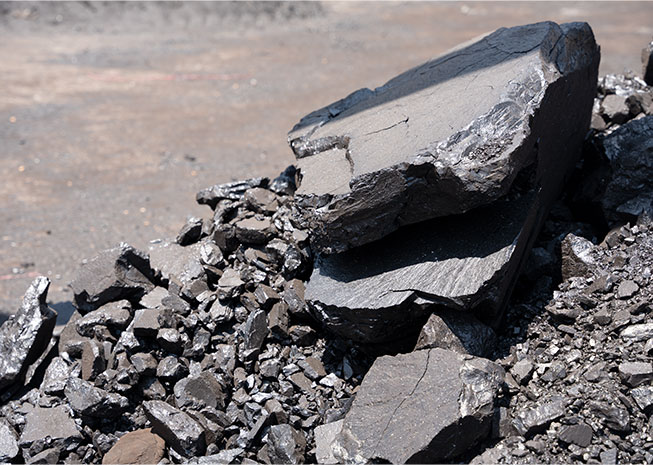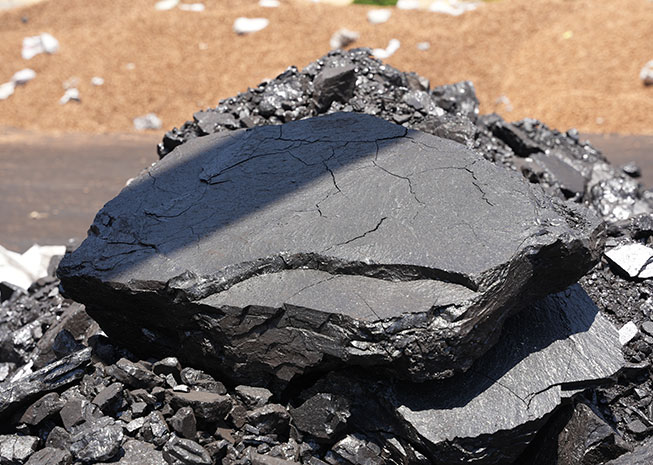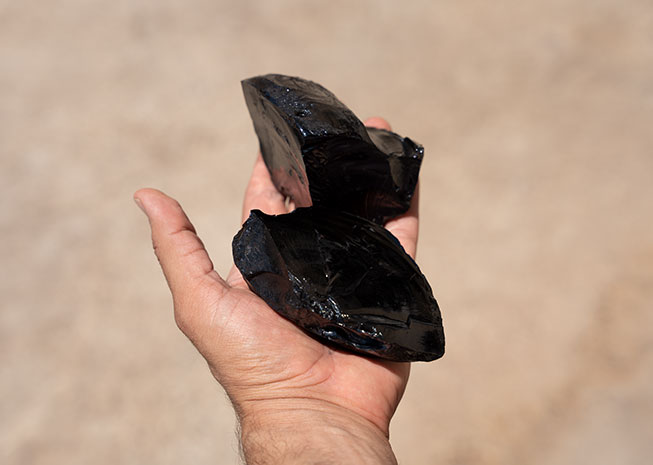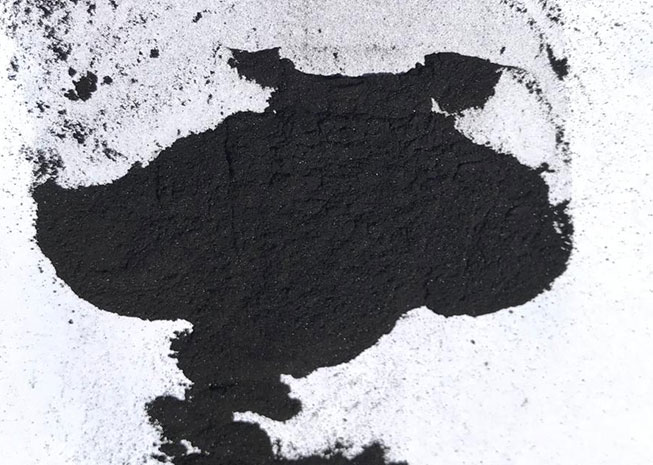Gilsonite
Gilsonite, also known as "uintaite" or "asphaltum," is a naturally occurring solid hydrocarbon mineral with a high carbon content found worldwide. It is often used in industrial applications due to its unique properties, such as high melting point, low solubility in water, and excellent resistance to heat and chemicals. Gilsonite is commonly used in the production of asphalt, bitumen, paints, inks, adhesives, and coatings. It was discovered in the Uinta Mountains in the United States and quickly gained recognition for its exceptional properties. Today, gilsonite is still highly valued and serves as a reminder of the natural wonders hidden within the earth. Its story is a testament to nature's ingenuity and mankind's ingenuity in harnessing its power.
Types
Gilsonite lump
Gilsonite lump is a naturally occurring solid hydrocarbon resin that is found in various regions around the world. This glossy black substance is often referred to as asphaltum or natural bitumen. It is formed through the gradual accumulation of plant and animal matter over millions of years, which undergoes intense heat and pressure to become a solid material. Gilsonite lump has a high carbon content and is known for its unique properties, including high melting point, low ash content, and excellent adhesion.
These properties make it highly valued in various industries, such as asphalt and road construction, paints and coatings, adhesives, and drilling fluids. In the asphalt industry, gilsonite lump is used to enhance the quality and durability of asphalt pavements. It is added to asphalt mixes to increase their viscosity, reduce rutting and cracking, and improve their resistance to moisture and temperature changes. In the paint and coatings industry, gilsonite lump is used as a binder and pigment to enhance the color and texture of paints and coatings. It also provides excellent water resistance and adhesion properties. In the adhesives industry, gilsonite lump is used as a tackifier to improve the bonding strength of adhesives.
Finally, in the drilling fluids industry, gilsonite lump is used as an additive to reduce fluid loss and improve wellbore stability. Overall, gilsonite lump is a versatile and valuable material that has many industrial applications due to its unique properties.
GRANULATED GILSONITE
Granulated gilsonite is a processed form of gilsonite lump that has been crushed and ground into smaller granules. This granulation process allows for easier handling, storage, and incorporation into various applications. Granulated gilsonite retains the same unique properties as gilsonite lump, including its high carbon content, high melting point, low ash content, and excellent adhesion. It is commonly used in industries such as asphalt and road construction, paints and coatings, adhesives, and drilling fluids, just like gilsonite lump.
The granulation process enhances the versatility of gilsonite by allowing it to be used in a wider range of applications. For example, granulated gilsonite is commonly used as a drilling fluid additive to improve wellbore stability and reduce fluid loss. It is also used as a binder and pigment in the paint and coatings industry, where its granular form allows for better dispersion and mixing. Additionally, granulated gilsonite is often used in the production of asphalt mixes, where its small particle size allows for better distribution and adhesion.
Overall, granulated gilsonite is a valuable material that offers the same exceptional properties as gilsonite lump in a more convenient and versatile form.
Micronized gilsonite
Micronized gilsonite is a further processed form of gilsonite that has been finely ground into a powder with a specific particle size distribution. The micronization process reduces the particle size of gilsonite to micrometer levels, typically ranging from 1 to 100 microns. This fine powder form enhances the dispersibility and solubility of gilsonite, allowing for easier incorporation into various applications.
Micronized gilsonite retains the same unique properties as gilsonite lump and granulated gilsonite, such as its high carbon content, high melting point, low ash content, and excellent adhesion. However, the micronization process further increases its surface area, which can enhance its performance in certain applications. Micronized gilsonite is commonly used in industries such as asphalt and road construction, where it can improve the durability, flexibility, and weather resistance of asphalt mixtures. It is also utilized in paints and coatings to enhance their gloss, adhesion, and resistance to chemicals and UV radiation. In addition, micronized gilsonite finds applications in adhesives, sealants, printing inks, and drilling fluids.
Overall, micronized gilsonite offers the same beneficial properties as other forms of gilsonite but in a finely ground powder form that allows for easier dispersion and utilization in various industries.
Physical Properties of Gilsonite(1)
| NO. | TEST | RESULT |
| 1 | Color in Mass | Black |
| 2 | Softening point | 200-250 C° |
| 3 | Moisture content | < 2 |
| 4 | Specific gravity | 1.02-1.2 |
| 5 | Sulphur | 2-3 |
| 6 | Flash point | < 290 |
| 7 | Ash | < 10 |
| 8 | Fixed carbon | 25-35 |
| 9 | Volatile Matter | 55-60 |
Physical Properties of Gilsonite(2)
| NO. | TEST | RESULT |
| 1 | Color in Mass | Black |
| 2 | Softening point | 180-190 C° |
| 3 | Moisture content | < 2 |
| 4 | Specific gravity | 1.04-1.2 |
| 5 | Sulphur | 2-4 |
| 6 | Flash point | 260-280 |
| 7 | Ash | < 13 |
| 8 | Fixed carbon | 25-35 |
| 9 | Volatile Matter | 55-70 |
Physical Properties of Gilsonite(3)
| NO. | TEST | RESULT |
| 1 | Color in Mass | Black |
| 2 | Softening point | 180-190 C° |
| 3 | Moisture content | < 2 |
| 4 | Specific gravity | 1.04-1.2 |
| 5 | Sulphur | 2-4 |
| 6 | Flash point | 260-280 |
| 7 | Ash | < 13 |
| 8 | Fixed carbon | 25-35 |
| 9 | Volatile Matter | 55-70 |
Physical Properties of Gilsonite(4)
| NO. | TEST | RESULT |
| 1 | Color in Mass | Black |
| 2 | Moisture content | 0.9 |
| 3 | Specific gravity | 1.2 |
| 4 | Sulphur | 8 |
| 5 | Flash point | < 290 |
| 6 | Ash | < 10 |
| 7 | Fixed carbon | 26 |
| 8 | Volatile Matter | 61 |











